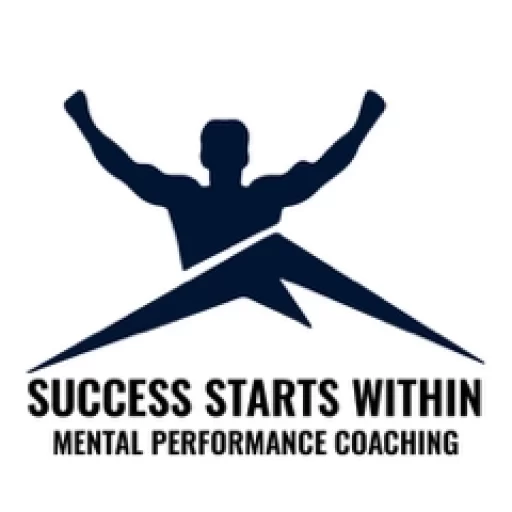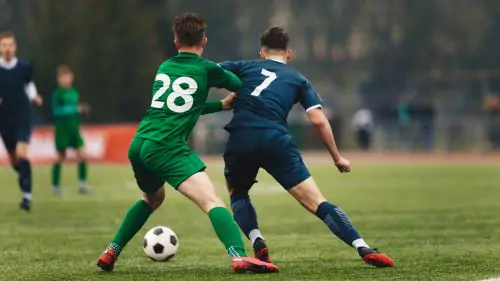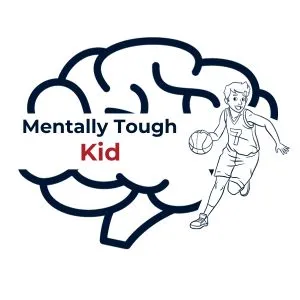Momentum is real. And when you begin a game not so great, it’s easy to allow this to create the type of momentum you don’t want. Momentum that leads to more mistakes.
Now we know that early game mistakes are going to happen. You’re not going to begin every game on a high note. So the question becomes: how can you turn a bad game into a good game?
Well, it all begins with how you’re responding to the mistake in the first place.
Responding to Mistakes: The Bad & the Good
If you are considering it a bad start to the game, I’m going to guess it’s because of mistakes. Now, that’s a general term to describe things not going how you want.
For example, a mistake could mean a strike out, a missed shot, or a missed tackle. Just as easily as it could mean a dropped pass, a turnover, or an error.
These mistakes are what lead you to think you’re having a bad game and not playing well.
When the goal is to turn a bad game around, the most important place to look is how you’re responding to these early game mistakes. To help, let’s examine the bad and the good in terms of handling early game mistakes.
The Bad
If early mistakes tend to snowball into more mistakes and an overall bad game when all is said and done, the way you’re responding to the mistake is likely not in the best way possible.
With that being said, you’re probably reacting to the mistake in the most natural way possible – by getting mad at yourself and upset over the mistake.
A lot of athletes have told me the reason they get mad at themselves is because they don’t want to make the mistake again. But here’s the thing…we need to think about what getting mad at yourself does to your mindset.
When you’re angry with yourself and upset over a mistake, are you in your most confident state? Are you as focused as possible? Are you feeling capable of succeeding for the remainder of the game?
Probably not.
So while getting mad at yourself in hopes of not making the mistake again may seem like a good idea, it actually does nothing but increase your chances of making another mistake. Further increasing the momentum you don’t want.
The Good
So, if getting angry isn’t the best option, how should you respond to early game mistakes? Are you supposed to be happy about them?
No, absolutely not. The fact is, feeling frustrated after a mistake is natural…you just don’t want to get too frustrated or allow the feelings to linger.
Handling mistakes in a good way means responding to them in a productive way.
You recognize that the mistake wasn’t what you wanted, however, you realize the importance of refocusing and putting yourself in the best position to make the next play – whatever that may be.
That really is the goal after a mistake: putting yourself in the best position to succeed moving forward.
You’re not happy about the mistake, but you recognize how hurtful it is to dwell on it and beat yourself up over it.
Your job is to learn, let it go, and move on. And the moving on part needs to be done with confidence.
Strategy to Turn a Bad Game into a Good Game
When you’re having a bad game, you really only have one choice: work your hardest to turn the game around. Yes, you could just give up and give in to the fact that it’s a bad day. But that’s not going to get you very far.
Your job is to adjust; playing your best moving forward in spite of early game mistakes.
To do so, there’s a strategy you can use that’s made up of two different elements: responding to the mistake and playing with confidence moving forward.
Responding to the Mistake Productively
Now, to reiterate – you aren’t going to be happy about the mistake. That’s not the goal. But you also shouldn’t allow yourself to get too upset over the mistake, since that is a quick and easy way to guarantee the bad game will continue.
Instead, your aim is to handle the mistake productively. This means in a way that helps you let go of the mistake and play your best moving forward.
Now, when we think about why mistakes lead to more mistakes, it has to do with your focus and confidence. In the next part of the strategy we’re going to cover confidence. For now, let’s think about your focus.
When you make a mistake and you’re mad about it, what are you thinking about? The mistake, since that’s what you’re mad about. This means you are still focused on the mistake.
If you’re focused on the mistake, you won’t be as focused on the task at hand. This can lead to careless mistakes since you’re not ready to make the next play.
Also, the more you focus on the mistake, the more you will fear making another mistake. And fear is a leading cause of mistakes, since it leads to you playing tight and timidly.
So, to let go of the mistake you need to reclaim your focus. To do so, here’s a simple process you can follow.
- Step 1: Breathe: right after the mistake, if you force yourself to take some deep breaths, this can work wonders to calm you down and reduce your feelings of frustration.
- Step 2: Learn: once you’ve calmed down with breathing, ask yourself if there’s anything you can learn from the mistake. By learning from the mistake, it becomes easier to move on. Learn, and then apply the adjustment moving forward.
- Step 3: Let go and refocus: once you’ve learned something from the mistake, it’s time to let it go and refocus on the next play. Try and find something very simple to focus on (like your routine, watching the ball, or keeping your hands up on defense) to make refocusing easier.
Playing With Confidence Moving Forward
Now that you’ve let go of the mistake, to turn the game around you must have confidence going forward. This confidence is honestly not going to be easy to come by. Especially if you rely on early game success to boost your confidence.
What can help is thinking about ways to feel confident in yourself that are in your control and not dependent upon how well you’ve been playing in the game so far.
Some examples include past successes (times you’ve done well in previous games, not meaning the current game), your routine, positive self-talk, and visualization.
You want to identify what you can use to increase your confidence before the game begins. That way, you’ll know, in the moment, what you need to do to regain your confidence following a mistake.
I love using visualization to increase confidence when there are early game mistakes, so let’s take a look at that exercise in a little more detail.
Visualization involves imagining yourself performing. After a mistake, if you’re thinking about not wanting to make another mistake, the images you’re creating in your mind are ones of you making mistakes – since that’s what you’re thinking about.
You want to shift this, creating images in your mind of you playing well. Visualization is a fantastic tool that can help.
All you have to do with visualization is imagine yourself performing the skill well. Here are a few different examples of how this visualization can work with different sports:
- A pitcher visualizing in the dugout between innings.
- A basketball player visualizing while sitting on the bench or during halftime.
- A soccer player quickly imagining making a move on a defender and then a nice pass.
- A tennis player visualizing before her serve.
- A receiver in football visualizing before his route.
For yourself, think about how you could use visualization during a bad game to increase your confidence moving forward. Because the more confidence you can generate, the greater your chances of turning the game around.
Final Thoughts
Early game mistakes can quickly lead to momentum that snowballs into a bad game. Your goal needs to be to turn these early game mistakes around.
To help turn a bad game into a good game, there are two elements you want to focus on: moving on from the mistake quickly, and playing with confidence moving forward.
The quicker you can let go of the mistake and refocus, the greater your chances are of playing well. Also, one of the main reasons early mistakes lead to more mistakes is a loss of confidence.
By working on increasing your confidence, you put yourself in a better position to succeed.
This is a great strategy for you to apply to work on turning bad games into good games as an athlete.
Thank you for reading and I wish you the best of success in all that you do.




